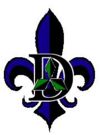Dorris Motorworks
| Dorris-Mitçubixi Motorworks | |
|---|---|

| |
| Type | Public company |
| Slogan | La joie de vivre, c'est conduire The Joy of Life is driving |
| Founded | 1897 |
| Location | Saint-Louis, Saint-Louis |
| Key people | Berenger Wolbrook, CEO & Director |
| Employees | 97,264 |
| Industry | Automobile Manufacturer, Public Transportation Vehicles |
| Products | Automobiles |
| Revenue | (roughly equivalent to fiscal 2005) |
Dorris Motorworks is the primary automobile manufacturer of Louisianne. While historically Dorris produced exclusively automobiles, in recent decades the automobile manufacturer has encompassed other products, expanding into the public transportation industry.
History
Dorris Motors Company was founded by George Preston Dorris. Born in Nashville, Tenisi, NAL, Dorris had built an experimental gasoline car circa 1896-7. He relocated to St. Louis, where he joined with John L. French to found the St. Louis Motor Carriage Company. Dorris served as chief engineer. When French returned to Peoria, Illinoise, Dorris stayed behind, retaining the production facilities and founded the Dorris Motor Car Company.
His first production vehicle had a four-cylinder engine with 101-inch wheel-base, which took the New Amsterdam Automobile show by storm. Over time, Dorris' cars became more powerful, graduating from a four to six-cylinder engine, and increasing nearly 30 inches in the wheelbase. The price tag of these cars was nearly $7,000.
Prior to the First Great War truck production began. In 1917, the capital stock was expanded $700,000 worth to $1,000,00 to all for expansion of the company.
In 1920, Dorris acquired the Astra Company, a competing St. Louis auto manufacturer, and re-organized as Dorris Motors Corporation. In 1925 rumors abounded that the Dorris, Haynes and Winton companies would merge, but this merger did not come to fruition at that time. However, in early 1944 Haynes and Winton approached Dorris, who was in hard financial straits and suggested a merger. Part of Dorris' poor finances were due to its involvment in the Affaire des Tramways. The companies merged, and continued to grow. Under the name of Dorris Motorworks (Dorris's name holding out because his company, while much less stable financially was the largest and most notable of the three) the company went on to produce the Astra, Dorris and Haynes car lines. The Haynes line was phased out following the Second Great War. Today, every third car in Louisianne is a Dorris or Astra (or other Motorworks makes).
Fiscal Outlook
Astras are known for their competitve use in Road Rallies around the world. In 2003 Dorris Motorworks began negotations with the Japanese government to construct a production facility there to expand their market to Asia. This deal was later changed in early 2005 into negotiations for the sale of Mitçubixi Motors to Dorris Motorworks. It is expected that they will use their knowledge of the Astras and the Mitçubixi expertise with motors to make a new, more appealing line of motor cars for the younger 'sports-car' demographic.
As a result of this merger, Dorris Motorworks posted particularly high revenue and profit margins for the 2005 fiscal year.
New Lines of Vehicles: The Eco-Series
The Furacano Season of 2005 was particularly detrimental to the oil processing facilities of of North America. In response to this and growing environmental desires within Louisianne and Japan, Dorris-Mitçubixi Motorworks announce in September of 2007 the creation of a new line of industrial tractor-rigs, the so-called "Tesla Series."
Working with Tesla-Westinghouse, engineers from Dorris-Mitçubixi have begun developing the prototype vehicles, slated for production in 2012. These vehicles would incorporate a new engine, capable of using ethanol produced from prairie grasses grown in the north of Louisianne, as well as surplus corn and wine production, to the dismay of some wine-producers in the country.
